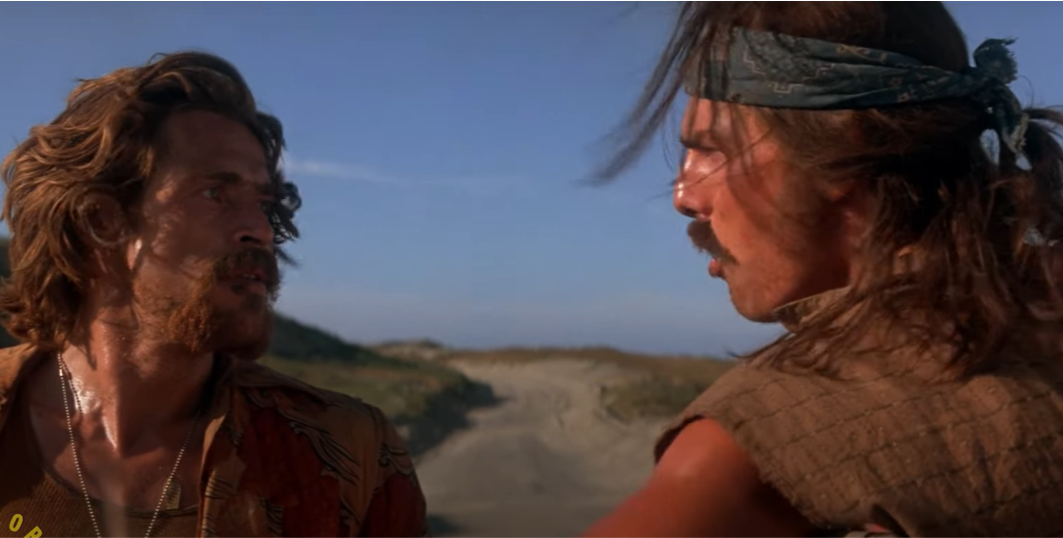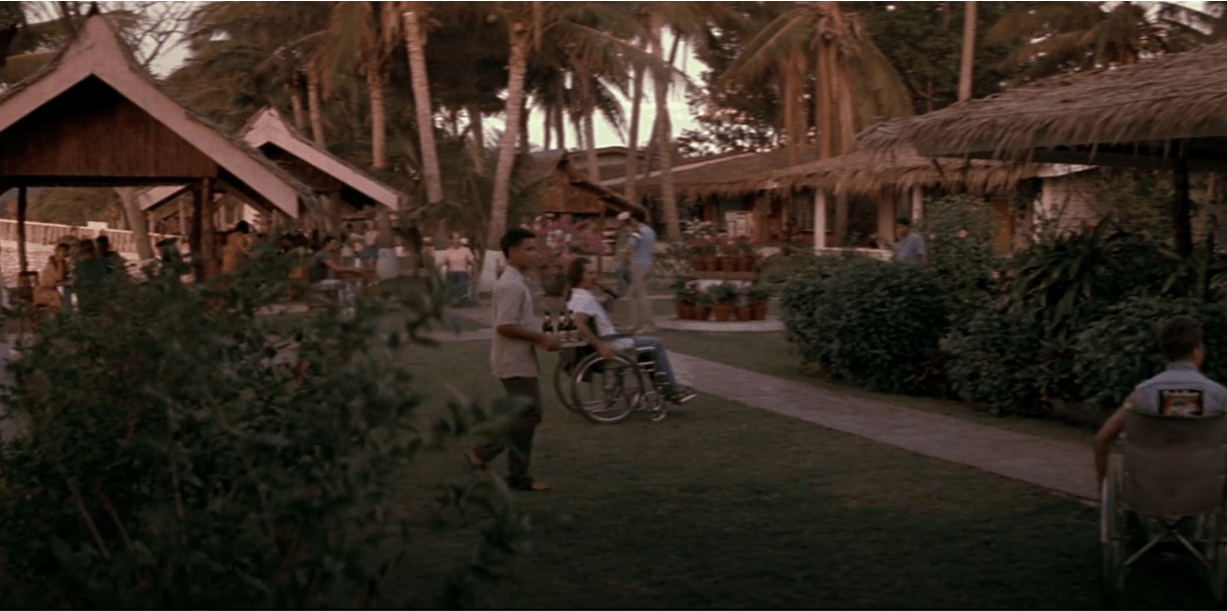In Oliver Stone’s ‘Born on the Fourth of July,’ which adapts the real-life story of anti-war activist Ron Kovic, there comes a point where the protagonist, in an intense burst of despair and loneliness, asks his father if anyone will ever love him. In response, he is sent to Villa Dulce, a haven for the veterans of the Vietnam War that promises a life of passion and entertainment. While Kovic has many new experiences over the course of his stay there, he soon finds himself falling deeper into his downward spiral, failing to make genuine connections and instead furthering his drinking problem. A fierce confrontation with fellow veteran Charlie forces him to open his eyes, prompting him to make his way back home and fight for a just cause. Thus, his stay in Dulce Villa marks a period of metamorphosis, a rebound after hitting his lowest point.
Villa Dulce is Partially Inspired by Real-Life Veterans’ Havens in Mexico
While the name Villa Dulce, which means sweet village, was created by writers Ron Kovic and Oliver Stone specifically for the narrative, the place itself is likely based on the real haven that Kovic inhabited, called Villa De Sol. It was one of the many group homes that rose to popularity in Guadalajara, Mexico, in the 1960s. Locally known as Gimp Camps, these establishments served as a haven for veterans of the Vietnam War, alongside other major wars such as World War II and the Korean War, who were eager to begin a new chapter of their lives. Villa Dulce is rendered as a beachside region far away from the hustle and bustle of the larger cities. Its real-life counterparts, however, were built in the middle of the second-largest city in Mexico, over a hundred miles away from the ocean.

The 1960s and 70s were marked by a rapid increase in the number of war veterans who were to receive care from the facilities run by the Veterans Administration. According to Jack Tumidajski’s 2005 book, ‘Quadalajara- The Utopia That Once Was,’ Due to an extremely low life expectancy rate, many paraplegics grew bold and decided to venture out on their own, heading to Mexico in search of more exotic locations. As such, the sunny, affordable city of Guadalajara appeared to be their perfect respite. Soon, word of mouth spread, and what started out as a handful of homes with bars and canteens soon blossomed into a community of hundreds, with many veterans living in shared rooms and enjoying their second chance at life, free of judgment. Such a description is also apt for the film’s Villa Dulce, which becomes the permanent residence for many veterans, including Kovic’s friend Charlie.
As the majority of these soldiers were notably wheelchair-bound or suffering from some form of debilitation of mobility, the place would soon be nicknamed Quadalajara, mixing the city’s name with quadriplegic. As the gradual flow of curious veterans continued, young Mexican men were trained and recruited to lift and often carry and transport quadriplegics around. Soon, the Paralyzed Veterans of America organization would procure the funds to make this city their formal residence, which they did in 1964, eventually creating their own clubhouses and Bingo halls. At the turn of the decade, the place was teeming with army men, many of whom opened their housing establishments, with the Las Fuentes region becoming a popular pick. Villa De Sol, or Sun Village, was one such Gimp house and became Kovik’s home for the summer of 1969.
Villa Dulce’s Inspiration Was Once a Thriving Community
In the movie, Villa Dulce is characterized by indulgence, crowded with veterans coping with their despair through greed and pleasure. On his first excursion, Kovic chances upon a card game that has been going on for over fifty hours, indicating the life of leisure they lead. Bars and brothels are shown to be commonplace there, and while many veterans spend their time in solitude, it is more common for them to solicit local women, who are described as indifferent to the veterans’ physical state. This information impacts the protagonist greatly, as he is suffering from dysfunction all throughout his lower body and craves sexual release. Later on, he wanders out on his own and has his first sexual encounter with an English-speaking prostitute called Maria Elena.

Although the movie presents the location as a haven that also doubled as a brothel, real-life depictions of the Gimp Houses paint a different picture. Jack Tumidajski, in his book, comments on this particularly, stating, “This was not the Guadalajara, Mexico (or Villa Dulce) as depicted in Oliver Stone’s movie ‘Born on the Fourth of July.’ The only portrayal of Mexican women in Stone’s movie was unfortunately that of (…) prostitutes. This is a demeaning misrepresentation of the señoras and señoritas of our neighbors to the south.” Thus, while the two regions have their fair share of similarities, Villa Dulce is more of a one-dimensional town compared to the thriving communities of its real-life counterparts, which makes sense as the former was created as a part of Kovic’s narrative arc.
Read More: Where is Ron Kovic Now? Update on the Vietnam War Veteran


